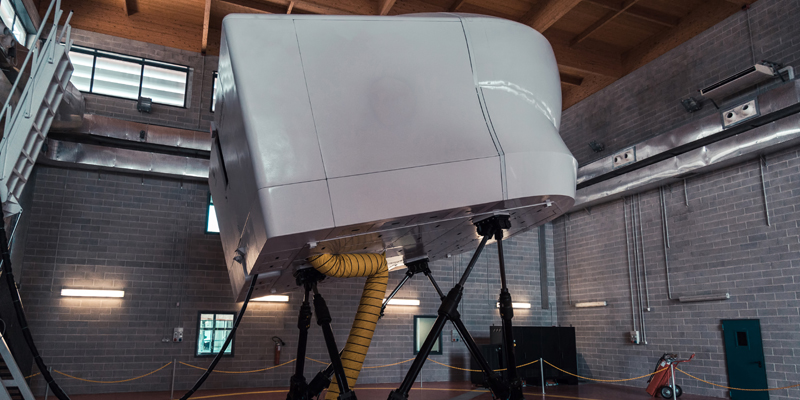Different routes to becoming a pilot
There are three accepted routes to obtaining a licence that will enable you to fly for an airline. They are commonly known as Integrated, Modular, or Multi-crew Pilot Licence (MPL). The integrated and modular paths lead to exactly the same licence while the MPL gives you a frozen ATPL, which has certain restrictions.
Each route has its pros and cons, and will suit some people more than others. The individual circumstances and preferences of the student will usually dictate the choice of route. You must look at each option, and weigh up which will best suit you.
The integrated route
It is widely accepted that this is the best route directly into an airline, and when recruitment is on the increase in times of pilot shortage, it probably is. The integrated programme provides intense, structured training over a relatively short period, maintaining a standard and continuity that is essential to the successful completion of any flying course. It provides a key element that any recruiter is said to be looking for – continuity of training.
The immediate downside to this type of training is that it can be expensive. The major advantage is that you are at a single flight training organisation (FTO) throughout your training, and they are contracted to get you through to completion.
When you leave the integrated course, you will have completed 195 hours of flight training (actual and simulator), and 750 hours of groundschool. Most, if not all integrated courses are classed as ‘minimum hours’, which means that any flying required above the prescribed minimum – for example, a failed test requiring some retraining – will have to be paid for in addition to the normal course fees. Make sure you investigate these costs before signing up.


The modular route
This alternative route leads to the same licence as the integrated programme as both routes cover the same sections. However, it gives an additional level of flexibility, allowing you to complete one section at a time, at a pace that suits you and your finances. You can also opt for a location more convenient for you.
The major difference is that you start the commercial training after gaining a PPL (A) and a minimum of 150 hours flight experience. Ensure you use these hours wisely with your commercial goals in mind. It would be wise to look at the syllabus of the integrated route, and fly similar exercises when building hours on the modular route. You will take the same groundschool exams and the same CAA flight exams as those on the integrated route once the 150 hours and night rating have been completed. You will, however, avoid all the interim flight tests involved with the integrated course, and an advantage of the modular course is that you can specify how and when you would like to take your tests.
If you wish to consider completing some of your primary flight training at a reputable school abroad, we would normally only recommend completing PPL, night rating, IMC (instrument meteorological conditions) rating, and perhaps the multi-engine rating abroad. These qualifications are relatively simple to convert to UK/JAR/EASA equivalent, but anything more becomes challenging.


The multi-crew pilot licence
The Multi-crew pilot licence (MPL) is a new concept and is structured very differently to more traditional flight training. It should only be considered if you want to fly for a specific airline on a certain type of aircraft. This is not the training path of choice if you are looking to become an instructor, or want to do anything other than fly for an airline.
This route has significantly fewer flying hours during the course, but this is offset by the increased number of hours you have to fly in an advanced full flight simulator.
If you are on this course, it should mean you have identified an airline and aircraft type you want to fly and are already employed by an airline, or part sponsored and have a job at the end of your training. If you don’t already have a job offer, it is not recommended that you embark of this type of training.
A typical course would consist of a minimum of 240 hours of flying, 70 hours of actual flying, 170 hours on simulators, and 750 hours of groundschool. If you are offered a place on an MPL programme, make sure you enter it informed, understand the possible pitfalls, and have a contingency plan. You are relying on the airline to see you through, and if they go bankrupt or make redundancies you may not be able to complete your training.
What about if I want to become a helicopter pilot?
Helicopter licences are much the same as fixed wing ones, with the addition of the suffix (H). The ground subjects required are almost the same, (with the addition of rotary specific subjects), as the CPL(A) exams. However, to obtain an ATPL(H) licence, there are no further exams, just a total hour’s requirement and a full instrument rating.
To fly helicopters for a living, you’ll need to be 18 and hold a Commercial Pilot Licence (CPL(H)) issued by the Civil Aviation Authority (CAA).
To get on to a CPL(H) training course you’ll usually need:
- GCSEs (A* to C), including English, maths or science, or equivalent qualifications
- to pass skills tests and a thorough medical assessment
- a minimum of 155 hours’ flying time
The number of flying hours needed may be lower for trained aeroplane pilots.
There are many reasons why an aspiring pilot would choose one route over another, and ultimately they all lead to an Air Transport Pilot’s Licence (ATPL). There are many things to be considered, and your choice of training route will be influenced by your personal preferences and circumstances.
For more information on becoming a pilot; the different routes, schools, and financing options, download our ‘Becoming a pilot: the inside track’ booklet for free here